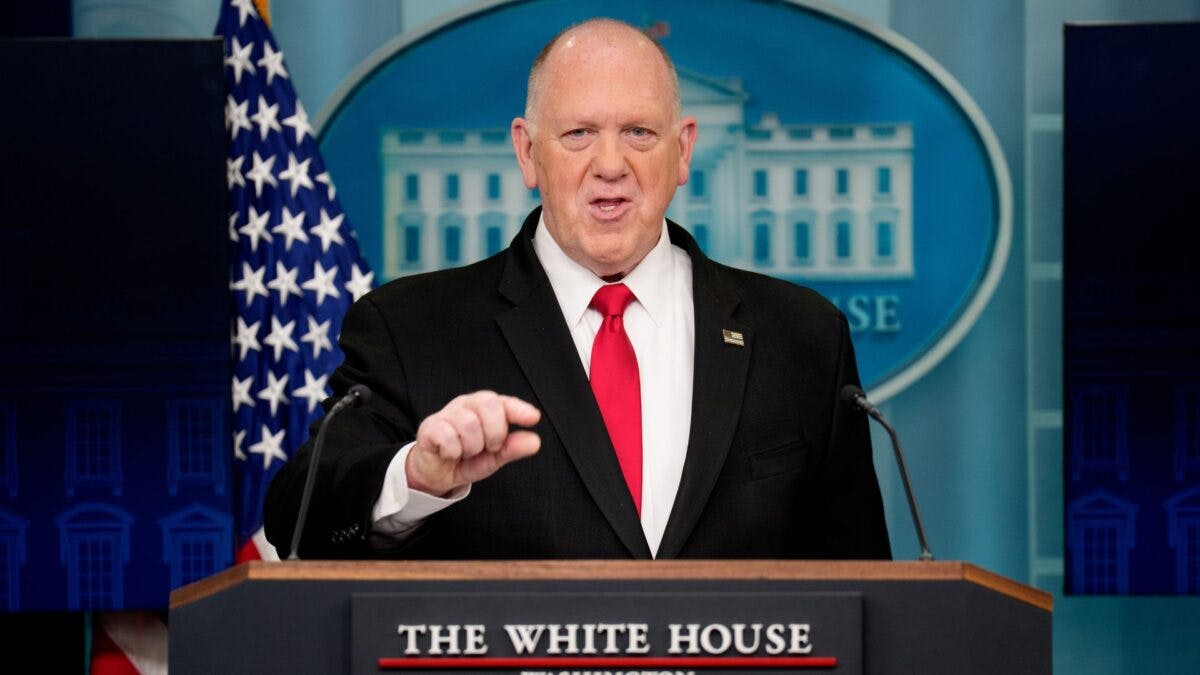‘As people of faith, we believe it’: Jerusalem ticks on God’s timeline



JERUSALEM – Sitting at Jerusalem’s First Station, a gentrified update of the city’s literal first train station for the locomotives that connected the ancient city to the almost equally antiquated port of Jaffa, one is struck by just how much archaeology has added to our understanding of civilizations.
A newly updated website called Israel in Their Land seeks to allow its visitors to viscerally connect ancient fragments of clay and stone, with more recent documents, which describe the millennia-long Jewish presence in the land of Israel.
AnaRina Kreisman, the director of Align with Zion, who was instrumental in working with philanthropist George Blumenthal in developing the site, is excited about how it can be used as a powerful tool to explain the irrefutable evidence of a celestial plan.

In fact, the site is broken down into three principal time periods; from Abraham to the Second Temple; from just before the destruction of Herod’s temple until the 1800s; and finally the initial waves of 19th century Aliyah until the present day.
“The site itself takes in approximately 3,500 years of history of the Jewish people – or we can say the Israelite presence in the Jewish homeland, the Land of Israel. There is a lot of ignorance in the world at the moment, it includes everybody, and in a world where facts are being generated as you go along, you don’t always know what’s true and what’s not. But you can get into history – we show archaeological proof, as well as lots of documents – and if you consult your Bible you will see the biblical narrative being correlated. So, the fact that a number of people now claim that we are settlers, this site shows you the continuous presence of the Jewish people in the Land of Israel … even after the Bar Kochba Revolt.”
Kreisman explains that this shows the Jewish people’s ancient enemies were present in the land, and recorded their impressions of the Jews they encountered there for posterity in clay and stone. The emphasis on non-Jewish sources backing up the ancient Jewish claims to the land is key.
“After the Bar Kochba revolt, people thought the Jews were exiled, but there has always been a Jewish presence in the land. After all the empires that have tried to annihilate the Jewish people, yet the Jews have always remained in their traditional homeland. Indeed, this knowledge comes with tremendous gratitude that we’re still here. What’s behind it? It’s a covenant that God gave to Abraham, Isaac and Jacob. He said, ‘this is your land.’ And it is that connection and covenant, which means many Jews are returning from exile.”
The use of non-Jewish sources continues in the middle period the site covers, as it shows how Christian and Muslim pilgrims documented the Jewish presence in the land. It is their sources, which help explain how the land and the people, and Torah are one.
“That’s why Jews who are outside of the land, always pray toward Jerusalem as did Daniel in the lions’ den, toward the Temple Mount – so Jews are reminded wherever they are,” Kreisman said.
“In the 1800s, just like in the Babylonian exile the Jews left in stages, so, now at this point they return in waves. All those things are documented in a timeline. Every find or document has a shareable link, and you can share it with people. What’s beautiful about the site is that the Bible comes alive. Through archaeology it helps us to understand and interpret the Bible.”

One of the ways in which the site does this is to highlight characters, such as King David, about whom chapters of the Bible are devoted. However, despite descriptions about the exploits of his life and the extent of his kingdom, he was always a somewhat tantalizing figure, because until relatively recently there was essentially no documentary proof he existed.
Some Bible minimalists charged he was only a local chieftain whose tribal lands were only modest. However, their maximalist opponents – taking the words of the Bible at face-value declared he was a mighty warrior, the head of an impressively large kingdom. Then in 1993, the entire framework of that narrative was flipped on his head by an astonishing discovery.
Archaeologists uncovered the Tel Dan Stele, which contains an Aramaic inscription which mentions the “House of David.” “And again, it’s not a Jewish source,” Kreisman insists. “We don’t have to prove anything. As people of faith, we believe it. This site can help anyone who wants to get the truth out there to actually show it.”
Furthermore, the Israel in their Land site shows how political disagreements and maneuvering has been a part of communal life for centuries – and is not just relevant to the modern day.
“Ezra and Nehemiah get into deep political difficulties; and we can learn about these things within a greater context. People lobbied hard against them, and they really had their work cut out to complete the construction of the Temple in Ezra’s case, and the Broad Wall in Nehemiah’s. And it is not something we should be afraid of, because we can see God’s hand at work. God’s name is not directly mentioned in the Book of Esther, for example, but even in this seeming hiddenness, His presence is overwhelming.”
A fascinating comparison is the people who built the wall were described as holding a “sword in one hand and a brick in the other.” This resonates deeply with the situation modern-day Israelis find themselves in; trying to maintain a semblance of a normal life, while also fending off genocidal enemies from all directions.
She also sees God’s hand in helping to unearth more of Jerusalem’s long-buried secrets.
“Those ancient seals from Jeremiah and Isaiah were supposed to disintegrate after a hundred years or so because they were made of softish clay. However, they were buried during the city’s destruction and it was the heat created by fires used to accomplish this, which allowed archaeologists to dig them up – complete – centuries later.
“Truly, one of the most awesome aspects of the site is that people can see these great discoveries like the Seal of the Prophet Isaiah, and also that of King Hezekiah. Finding them and making them available for users really makes the Bible come alive. We’ve worked in things so that people can connect the dots, which allows them to see a totally different world. And if you’re part of it, you want to know how you can align with it.”

Studying them has completely changed our understanding of things. God has a way of revealing important facts and helping bring them to light.” And the verification of the Biblical narrative is certainly a thorn in the side of organizations such as UNESCO, the World Heritage Foundation. Backed by the Obama administration, it asserted there was no connection between Jerusalem and the Bible, and that the city only belongs to the Islamic faith. Why else would the same organization be calling for a cessation of archaeological digs in and around Jerusalem? Could it be due to the fact too much evidence of a Jewish presence long predating anything Islamic or Arab is constantly being turned up?
“The site shows there is a time and a sign for everything; and if we learn to acknowledge the signs then we can be on the right side of history. After the destruction of Jerusalem she slowly got lost and as it says in Isaiah 49:6, God explicitly says he will not forget Jerusalem. ‘See, I have written your name on the palms of my hands. Always in my mind is a picture of Jerusalem’s walls in ruins.’ One thing happens and there is a domino effect, and we’re in the midst of that. New things are being discovered every day and we’re starting to get a bigger and clearer picture.
Jerusalem sits on a timeline, which can be broken down into accurate segments and begin to make a lot of chronological sense.
“In 1867 Charles Warren discovered the City of David. In 1917 General Allenby liberated the Old City having driven north following the fall of Beersheeba. In 1967 the IDF liberated the whole of Jerusalem following Israel’s lightning victory in the Six Day War. And in 2017, President Trump declared Jerusalem the eternal capital of Israel. The timeframe of the ‘Yovel’ or ‘Jubilee’ – a 50-year cycle after which there is a massive shift – is very clear.”

King Cyrus – to whom U.S. President-elect Donald Trump has been compared – didn’t specifically say to the Jews they could go back and build their Temple, although this was effectively the outcome. When he came to the throne, Cyrus utilized the help of the priests of Marduk during Nabonidus’ reign, gaining their support – after earlier aiding them – to assist him in dethroning Nabonidus in a peaceful transition of power. He repaid them by allowing them to rebuild their temple. He saw what worked for him and decreed similarly for all the lands under his control. In this way he permitted the Jews to follow their own specific religious practices, which included a rededication of their previously destroyed Temple.
An obvious question, given the amount of evidence tying Jewish history to the land, is why despite it, do people still question Judaism’s connection, and try to minimize it at best, while others attempt to erase it completely.
“There has been an anti-Semitic dynamic for centuries,” Kreisman notes. “It always gets to the point when Jews ‘become a problem.’ I think that when Jews come back to the land of which they were created – to be a light unto the nations. We can sometimes occupy a gray area, which is where we can often be misunderstood – such as the need to physically defend ourselves after being attacked, as well as fending off the criticisms. And you can see after Oct. 7 Jewish people have become stronger in their identity and the site has received much more traffic. If you follow history; in every generation people want to find a reason to annihilate the Jews.”
“I believe archaeology is connected to the consciousness of the world,” says Kreisman. “People want the truth no matter what the propaganda is. The more we uncover the secrets of Jerusalem’s past, the more knowledge grows in the world as well.”
According to Kreisman, “Jerusalem calls back her sons; her destiny is entwined with the Jewish people. Her only comfort is for her sons to return. The more Jewish people return and the more we uncover about the city, the more people will return. Nothing is happenstance, it’s all correlated. The more you support Israel, the more you support the truth of Israel, the more you are bringing the bigger truth about. We have ambassadors who are fighting for the truth and it means something; it does something.”
What's Your Reaction?
 Like
0
Like
0
 Dislike
0
Dislike
0
 Love
0
Love
0
 Funny
0
Funny
0
 Angry
0
Angry
0
 Sad
0
Sad
0
 Wow
0
Wow
0












































































